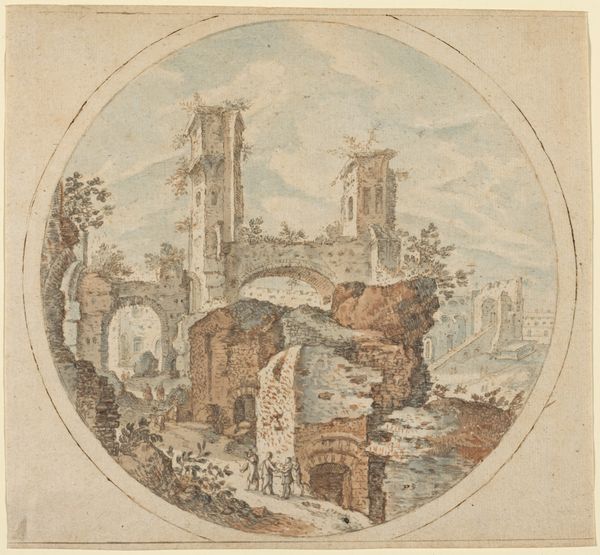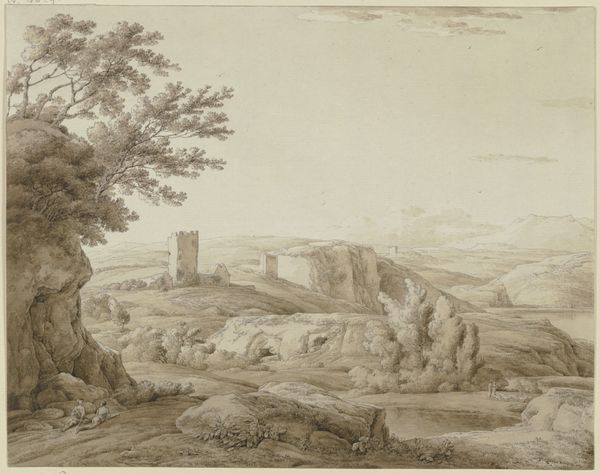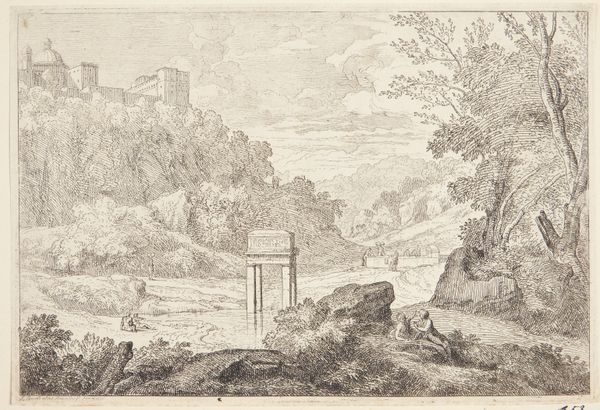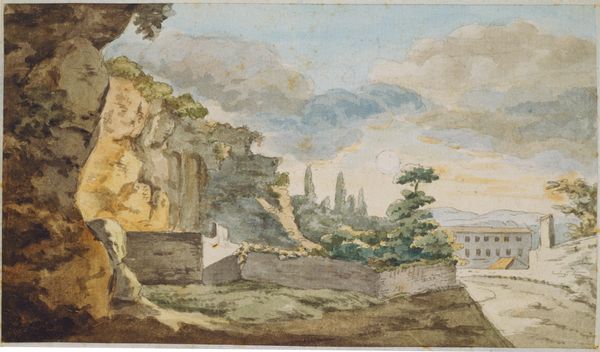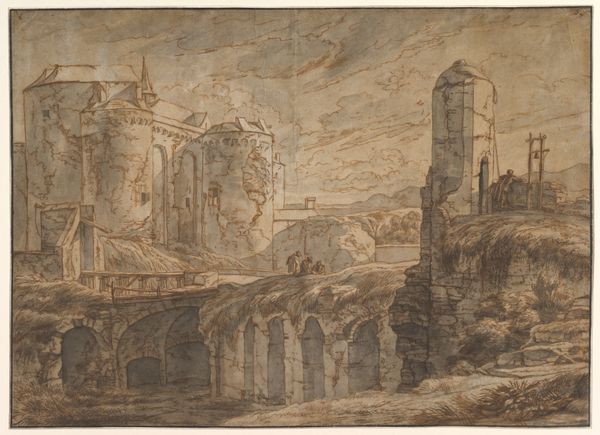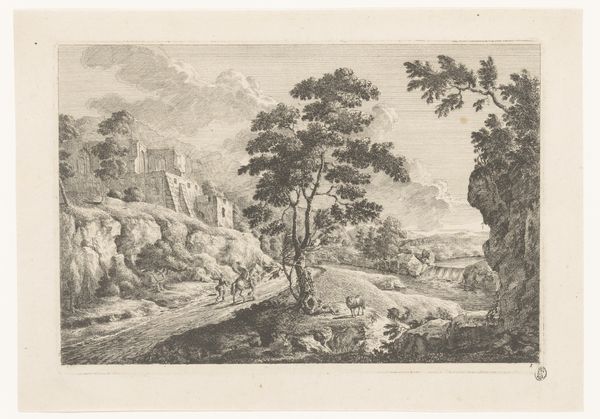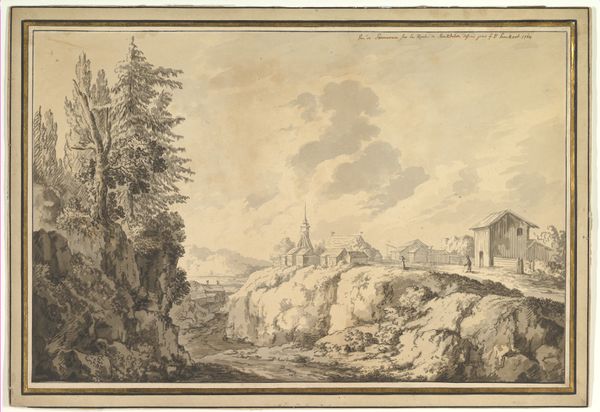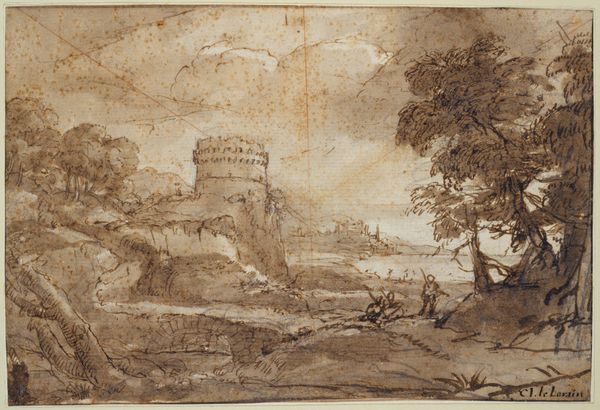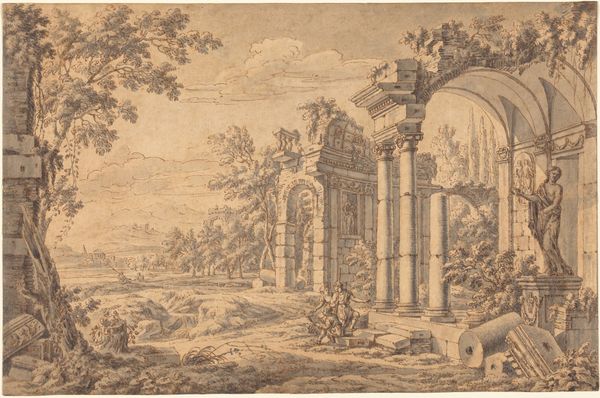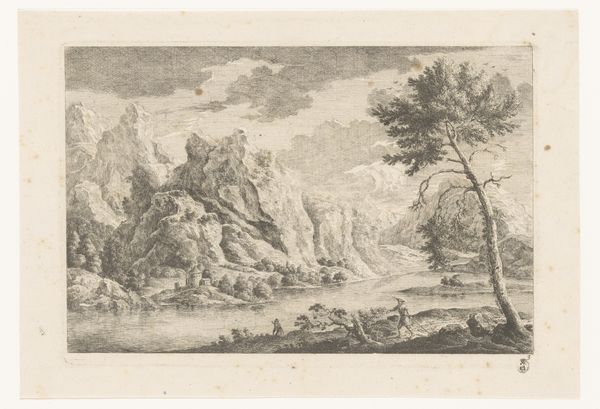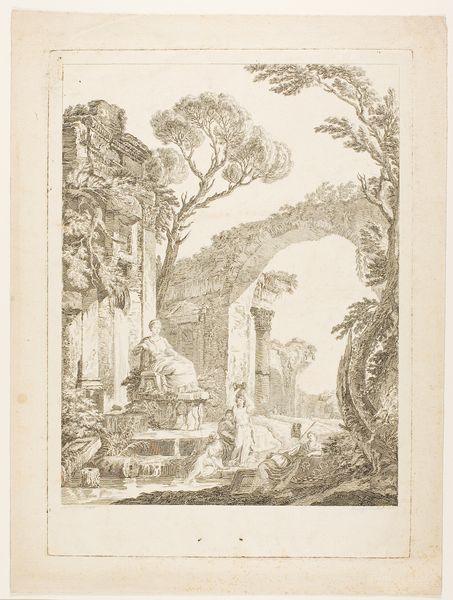
drawing, watercolor
#
drawing
#
landscape
#
romanesque
#
watercolor
#
coloured pencil
#
watercolor
Dimensions: sheet: 21.1 x 23.6 cm (8 5/16 x 9 5/16 in.) image (diameter): 19.8 cm (7 13/16 in.)
Copyright: National Gallery of Art: CC0 1.0
Curator: Let’s turn our attention to "Travellers among Roman Ruins", an evocative piece rendered with watercolor and drawing, attributed to Pieter Stevens. Editor: The composition immediately strikes me as wistful. It's framed within a circle, creating a sense of looking through a portal to another time or place, almost dreamlike. The warm browns and faded blues lend an air of antiquity. Curator: Precisely. Stevens's engagement with Roman ruins provides us a lens into Northern European artistic and intellectual circles reflecting on classical legacies, particularly within the Romanesque movement. Think about what Rome represented, the centre of power, culture and law - for centuries dictating European history, but rendered here into ruins. It makes us question how power and memory relate. Editor: The materiality is compelling here. It's more than just representation. Notice how Stevens captures the weathering of the stone through thin washes and delicate strokes. The choice of watercolour suggests a sense of transience and decay that is aligned with the actual state of the ruins being depicted. And also, how his craft engages with those ideas of making ruins—rendering that state of dereliction visible and palpable. Curator: Absolutely. Stevens isn't merely documenting architecture; he’s participating in a wider conversation. Consider the travellers themselves - pausing amongst these once monumental landmarks of western civilization, who may very well stand in for us as audiences too, pondering what has faded over time. This invites a deeper consideration about the grand narratives we attach to Rome and its historical repercussions echoing even into modernity. Editor: And isn’t there something interesting about the positioning of these travellers in the very bottom, taking respite in front of that monumental decay, almost consumed by that monumental stone behind. We, like the characters, seem bound by its making. Curator: I agree. Overall, I believe this piece isn't just a pretty picture of Roman ruins, but rather an exploration of historical power, material process and how collective memory intersects. Editor: Yes. Considering all aspects together - composition, medium, labor – what stands out for me most powerfully here is how time itself is embedded as both theme and technique in this compelling piece.
Comments
No comments
Be the first to comment and join the conversation on the ultimate creative platform.
